Complete Assisted Pull-Up Exercise Guide
Learn everything about Assisted Pull-Up exercise including proper form, muscles worked, benefits, variations, alternatives, and common mistakes to avoid.
Muscles Worked & Equipment
Primary Muscles
Secondary Muscles
Equipment Needed
Muscle Categories
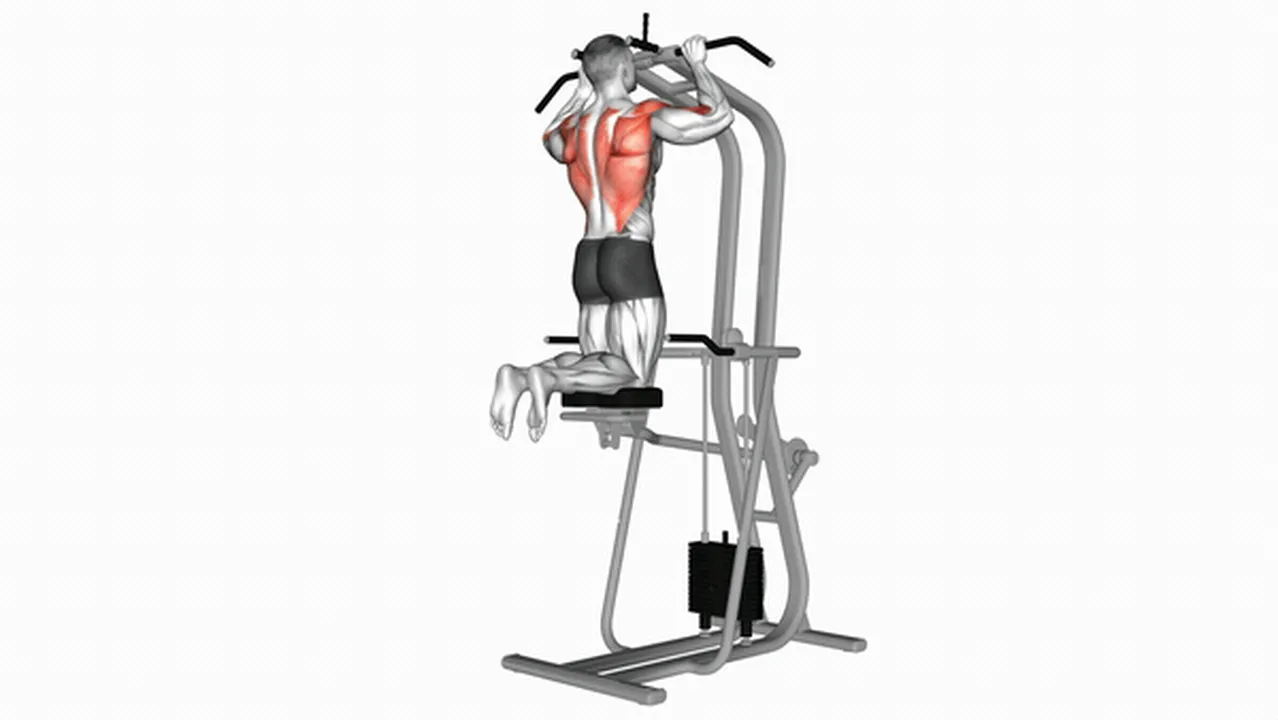
Introduction
1.
It mainly works your back and biceps muscles, making them stronger.
2.
It's perfect for people learning to do regular pull-ups.
3.
Even if you can already do pull-ups, this exercise can help you get better at them.
4.
Doing assisted pull-ups helps you build overall upper body strength and makes your muscles look more defined.
5.
It's a good exercise for almost everyone, no matter what your fitness level is.
6.
Because it's so versatile, many workout plans include assisted pull-ups.
 Zylo AI
Zylo AI
Free Calorie
Counter
App
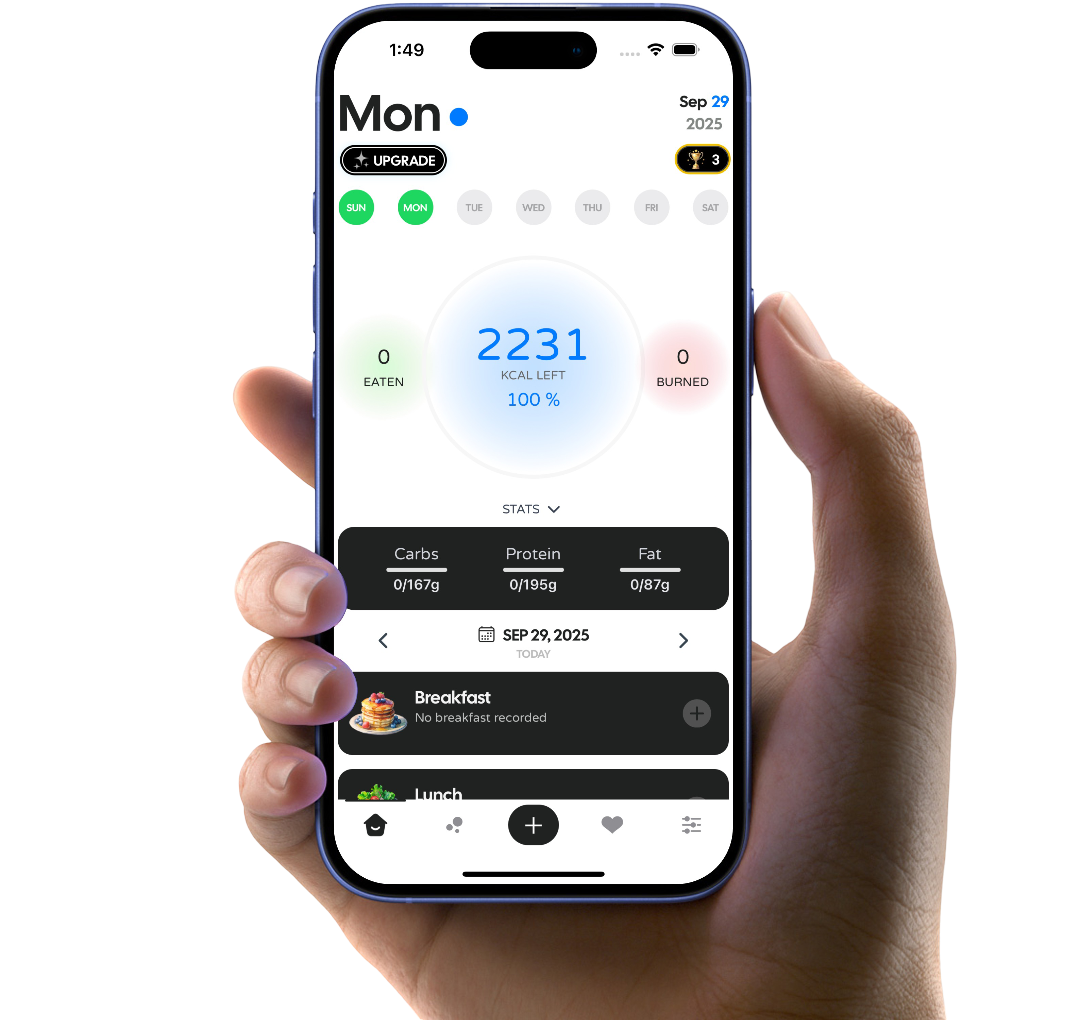




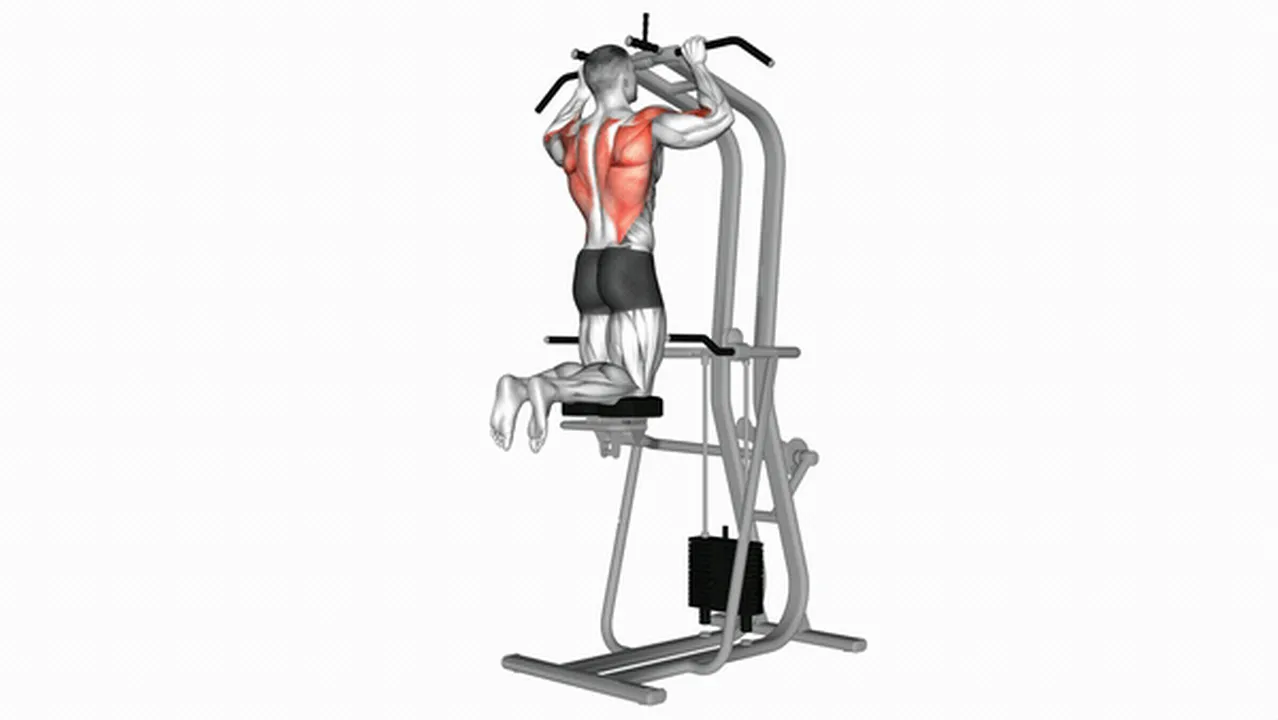
What are the benefits of assisted pull-ups?
1.
They make your back muscles stronger. Your back muscles, especially the latissimus dorsi (lats), are the main muscles used. Stronger lats give you a better posture and a more defined back.
2.
They help build bigger and stronger biceps. Biceps are important for arm strength and overall fitness. Assisted pull-ups work your biceps as you pull yourself up.
3.
They improve your grip strength. A strong grip is useful for many exercises and everyday activities. Holding onto the bar during assisted pull-ups strengthens your grip.
4.
They help you learn to do regular pull-ups. If you can't do a full pull-up yet, assisted pull-ups are a good way to practice and gradually build up the strength you need.
5.
They are easy to do, no matter your fitness level. You can use special machines or resistance bands to make the exercise easier, so it's good for beginners and experienced people alike.
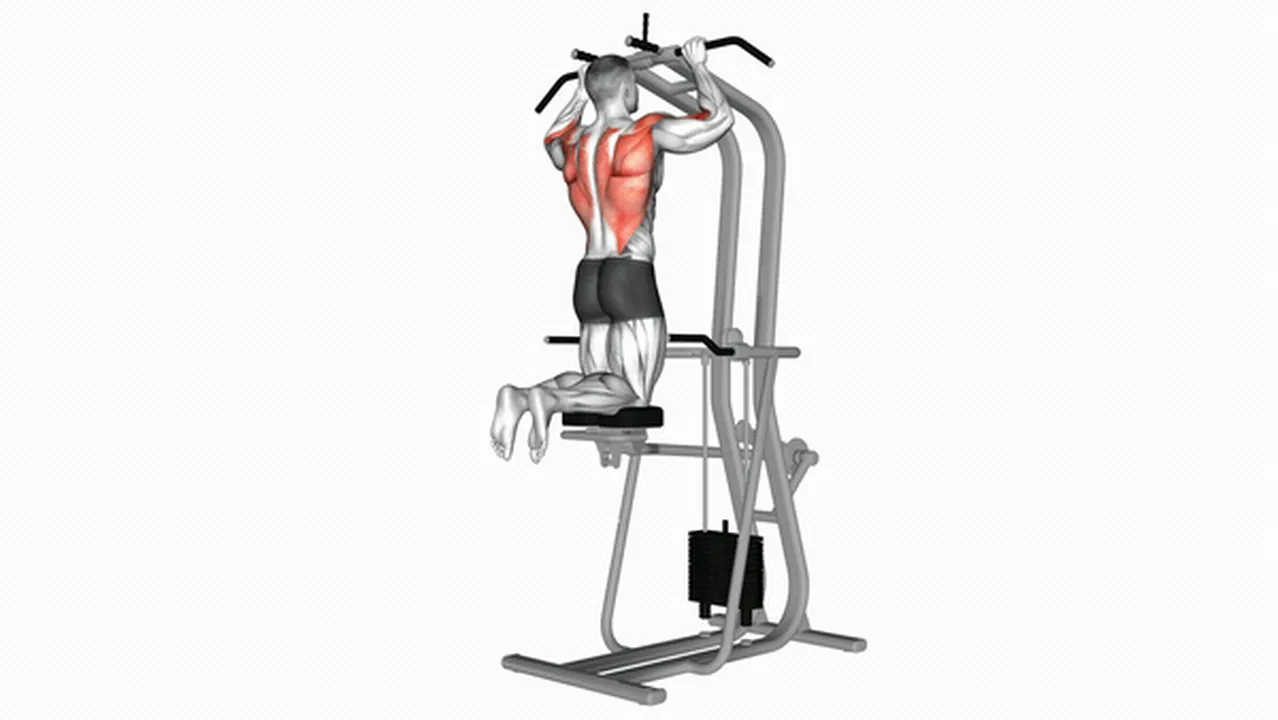
How to do assisted pull-ups?
1.
Get Positioned: Stand on the machine's platform or put your knees or feet into the resistance bands. Grab the pull-up bar, keeping your hands about shoulder-width apart.
2.
Tighten Up: Squeeze your stomach muscles to keep your body steady. This helps you control the movement and makes the exercise more effective.
3.
Pull Yourself Up: Use the machine or bands to help you pull yourself up towards the bar. Keep going until your chin is over the bar.
4.
Go Down Slowly: Lower yourself back down to the starting position. Do this slowly and in control, don't just drop.
5.
Important Tip: Try not to swing or use sudden movements. Focus on using your muscles to pull yourself up and lower yourself down. This will help you get stronger.
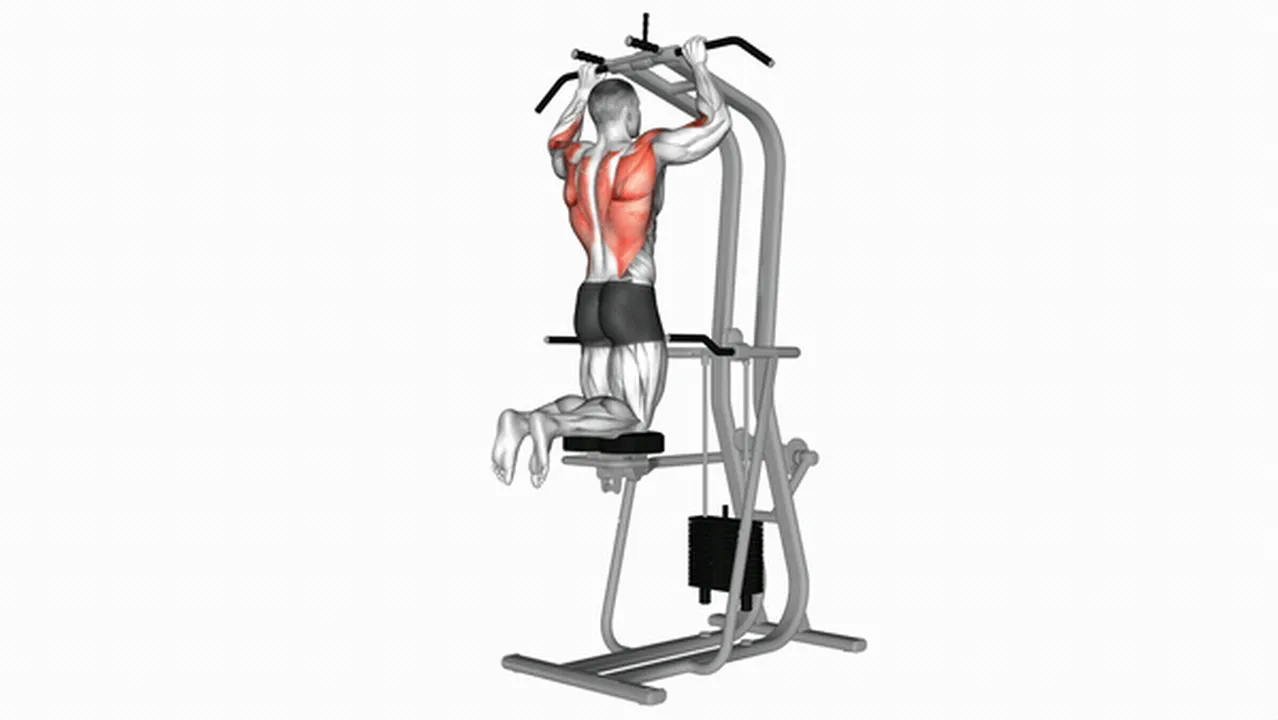
Common assisted pull-up variations
1.
They're especially helpful for beginners or people recovering from injuries because they make pull-ups easier.
2.
There are different types of assisted pull-ups, each with its own advantages.
3.
Assisted Parallel Close Grip Pull-ups: This type uses a close grip on the bar, which can be gentler on your shoulders. It helps you build strength gradually in your back and biceps.
4.
Band-Assisted Pull-ups: Resistance bands give you extra support, making the pull-up movement less difficult. You can adjust the band's strength to match your fitness level. This is perfect for beginners or anyone needing extra help.
5.
Negative Assisted Pull-ups: This focuses on the lowering part of the pull-up. You start at the top and slowly lower yourself down. This helps strengthen the muscles used in pull-ups, even if you can't do a full pull-up yet.
6.
All three types of assisted pull-ups can improve your grip strength and help you get stronger overall.
7.
They're a safe way to work towards doing unassisted pull-ups.
8.
Experiment with each type to find what works best for you and include them in your workout plan.
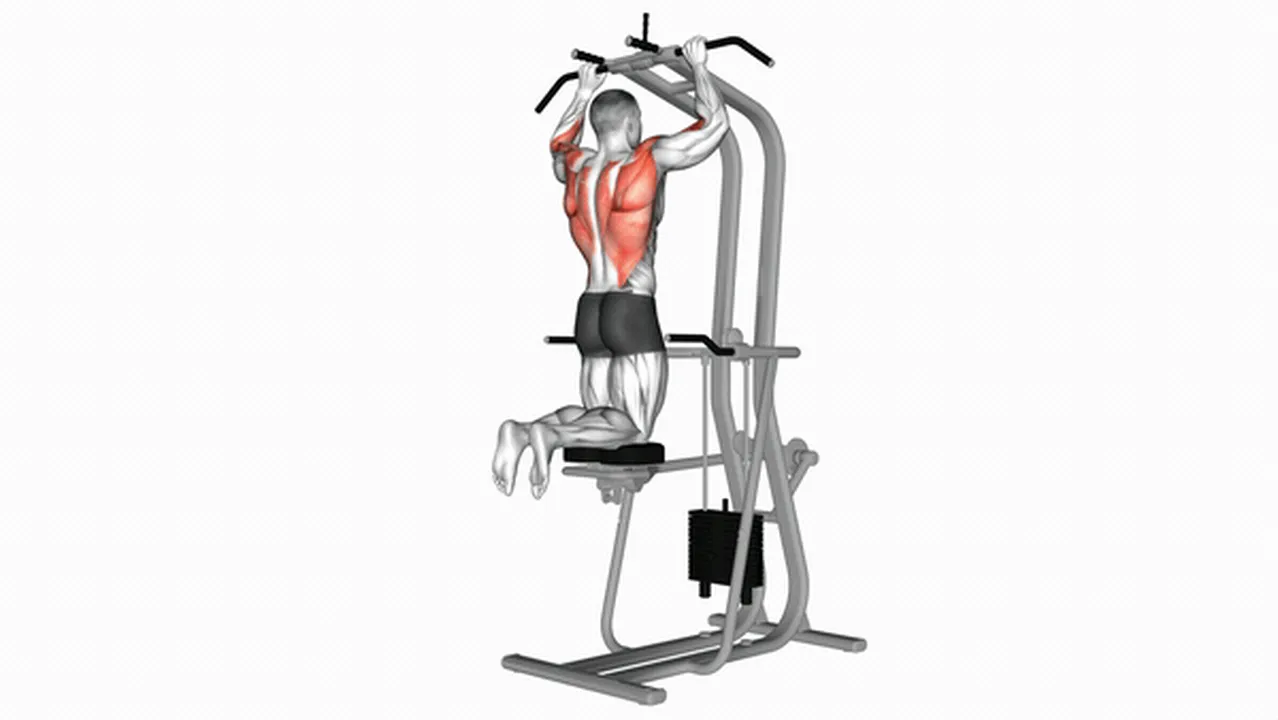
Alternatives to assisted pull-ups
1.
Assisted Chest Dips: This exercise works your chest, triceps (the back of your upper arms), and shoulders. It's good for beginners or people recovering from injuries because it lets you move slowly and safely, building strength without hurting yourself.
2.
Cable Decline Seated Wide Grip Rows: This exercise is mainly for your upper back muscles. A strong upper back helps with posture and overall upper body strength. It uses many muscles at once, making it very effective and safe.
3.
Resistance Band Pull-Apts: This exercise focuses on your upper back and helps your shoulders stay stable. It's perfect if you can't do pull-ups yet but want to work the same muscles. The bands provide resistance, helping you build strength.
4.
Each of these exercises is different and can be adjusted to match your fitness level. Try them out to find what works best for you!
 Zylo AI
Zylo AI
Free Calorie
Counter
App






Common mistakes during assisted pull-ups
1.
Full Range of Motion: Go all the way up and all the way down. Don't stop halfway. This makes the exercise work your muscles properly.
2.
No Swinging: Keep your body still. Don't use your legs or body to swing yourself up. This makes the pull-up less effective.
3.
Correct Grip: Hold the bar comfortably, about shoulder-width apart. A good grip keeps you safe and helps you do the exercise correctly.
4.
Strong Core: Keep your stomach muscles tight. This protects your back and makes the exercise more effective.
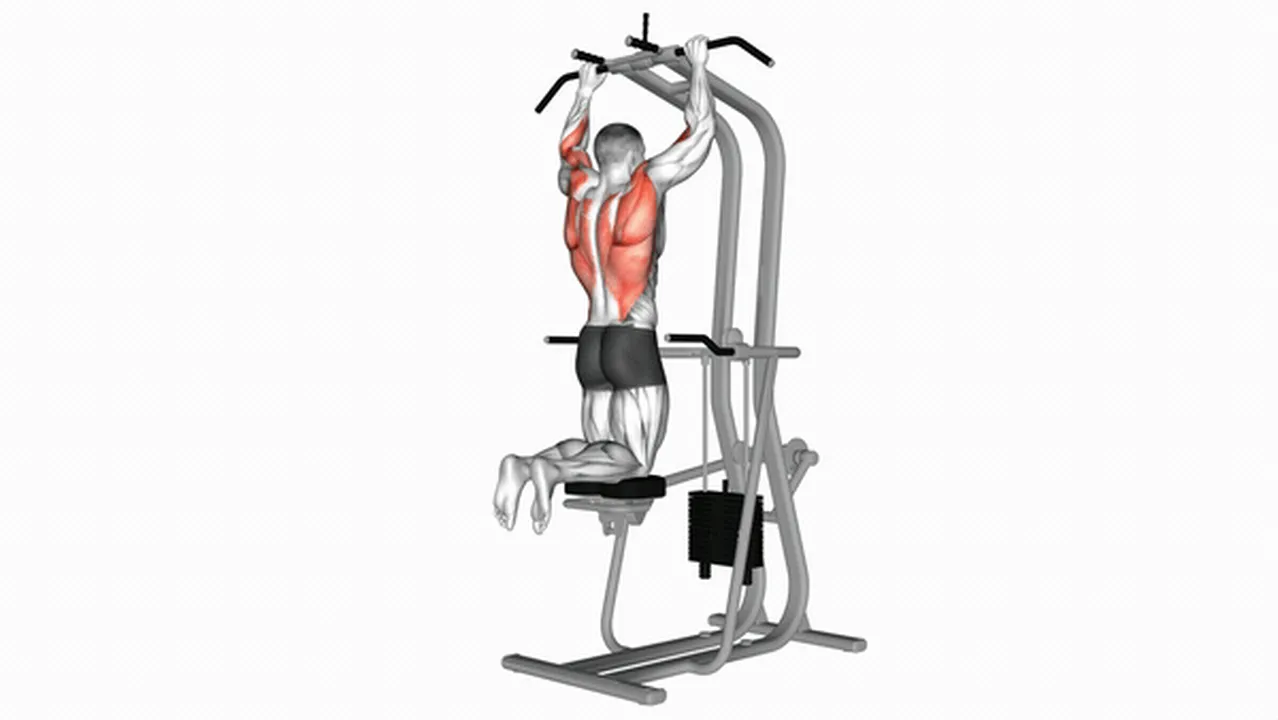
Takeaway
1.
They help you build upper body strength gradually.
2.
Good form is key for safety and better results. Focus on keeping your body straight and controlled throughout the movement. Don't swing or jerk.
3.
Start slowly. Don't try to do too many at once, especially when you're first learning. It's better to do a few correctly than many poorly.
4.
Use an assisted pull-up machine or resistance bands to help you. These tools make the exercise easier, allowing you to build strength before you can do a full pull-up.
5.
Pay attention to how your body feels. If you feel pain, stop immediately and rest. Listen to your body and don't push yourself too hard.
6.
Add assisted pull-ups to your regular workout. Even a few sets a couple of times a week can make a big difference over time.
7.
Practice regularly for improvement. The more you do them, the easier and stronger you will become.
 Zylo AI
Zylo AI
Free Calorie
Counter
App





Disclaimer: The routines and schedules featured on our website are for informational purposes only and do not constitute medical or professional advice. Individual preferences, goals, and daily routines may vary significantly. Please note that some product links within our content are affiliate links. While not all routines have been explicitly endorsed by the individuals mentioned, we strive to ensure the accuracy and timeliness of the information we provide.
Disclaimer: Zylo AI(BR) does not provide medical advice, diagnosis, or treatment. Any information published on this website or by this brand is not intended as a replacement for medical advice. Always consult a qualified health or mental health professional with any questions or concerns about your mental health.
